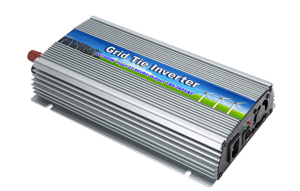Inverter inductor is generally composed of skeleton, winding, magnetic core or iron core, shielding cover, packaging material, etc. It is a component that can convert electrical energy into magnetic energy and store it. The structure of an inductor is similar to that of a transformer, but with only one winding. The biggest feature of the inductor is that the current cannot be changed suddenly, but can only gradually become larger or smaller. It is precisely by using this feature that the inductor can change the intermittent DC square wave current into a continuous sine wave current. Photovoltaic modules are DC sources and do not generate electromagnetic interference by themselves. In order to reduce costs, some inverter manufacturers cancel the inverter DC EMI common mode inductance. In fact, due to the very high switching speed of the inverter power devices, large common-mode interference currents are generated, which would be transmitted to the DC cables and components without the DC EMI common-mode inductance. At this time, the component will act like an antenna and generate electromagnetic interference, which will affect the normal use of the user's peripheral home appliances, such as televisions, radios and other equipment.

What is the function of inductor in solar inverter?
Inductor is one of the most critical components in solar inverters, mainly for energy storage, boosting, filtering, EMI elimination, etc. Using glue-filled inductance can reduce the temperature inside the solar inverter and the inductance, and can also significantly improve the inductance performance and longevity. In a photovoltaic inverter, there are usually four kinds of inductors, DC common mode inductor, boost inductor, filter inductor, and AC common mode inductor.
Reasons for inductor of solar inverter heating
Solar inverter inductor heating may be due to excessive losses on the inductor. The losses of the inductor are the losses due to the coil resistance and the losses due to the magnetic core.
Loss of coil
The loss on the coil is related to the coil resistance and the size of the current. There is generally no way to reduce the current, so we can only find a way from the coil resistance. The measures can be taken are as following.
- Increase the wire diameter of the wire. This method may be limited by the shape and size of the magnetic core. If it is too thick, it may not be able to wrap around;
- Shorten the length of the wire. This method will lead to a decrease in the inductance when the magnetic core material is unchanged. If the inductance is to be kept the same, the magnetic core with higher permeability must be replaced;
- If the inductor works at high frequency, there will be a skin effect on the wire, that is to say, the current flows on the surface of the wire, as shown in the figure below, in this case, the utilization rate of the wire is small, and the method that can be considered A single-strand wire is changed to a multi-strand wire and wound in parallel, which can also reduce the loss of the coil.
Loss of core
The core loss is mainly composed of hysteresis loss and eddy current loss. The hysteresis loss is related to the hysteresis loop of the magnetic core material, which is proportional to the size of the area enclosed by it. Br is the remanence, and Hc is the coercive force. These two are the inherent characteristics of the magnetic core. The two parameters are also determined to remain unchanged.
The maximum magnetic flux density and the maximum magnetic field strength are related to the working state of the circuit. Reducing the ripple current of the inductor can reduce the inductor hysteresis loss. When the inductance is constant, the reduction of the ripple current requires the increase of the frequency, but the increase of the frequency will increase the core loss.
